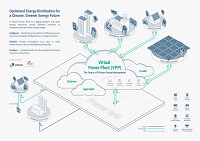The global energy crisis in 2021 was a stress test for the OEM. The onset of the global energy crunch resulting in high and volatile global oil and gas prices hit the wholesale electricity market hard, resulting in six independent retailers having exited the market. Consumers who had existing contracts with these retailers were swiftly transferred to either SP Group or another electricity retailer.
“This episode helped EMA realise the need for stronger safeguards against the volatility of the wholesale electricity market for consumers,” Jie Min said.
Since then, EMA has introduced measures to make the market more resilient. Retailers must hedge at least 80% of the electricity on a 24-months forward basis. This means that retailers must insure their retail contract load against wholesale market price volatility. This shields retailers from sudden price spikes and ensures that retailers can continue to honour the contracts with their customers during price shocks.
Retailers are also required to have a minimum tangible net worth of at least $1 million both at time of application and renewal of their licences. This is to ensure they are suitably capitalised to begin retailing electricity.
In addition, for premature termination of contracts on retailers’ part, retailers must compensate consumers the same amount that the consumers would have to pay for any early termination on their part. This is in addition to rules that retailers are prohibited from unilaterally terminating contracts with consumers.


















